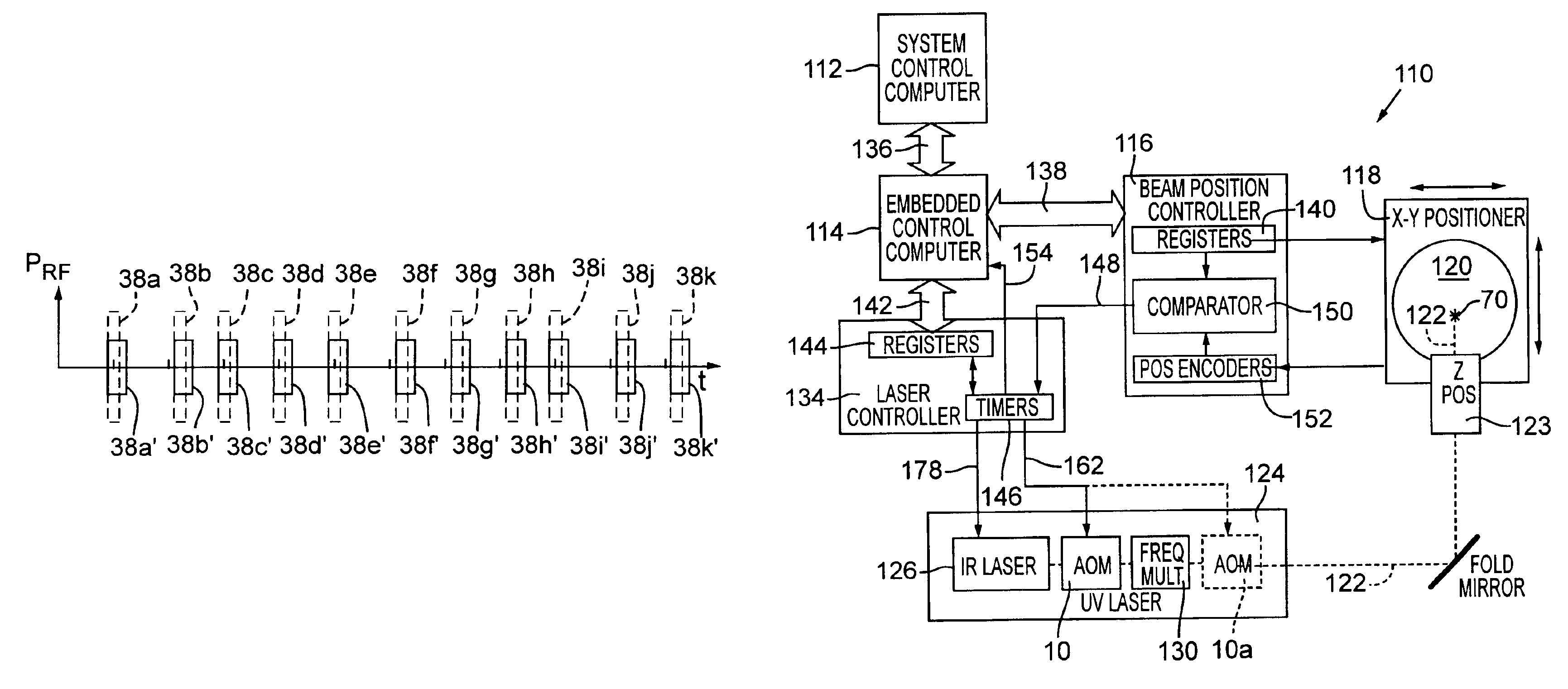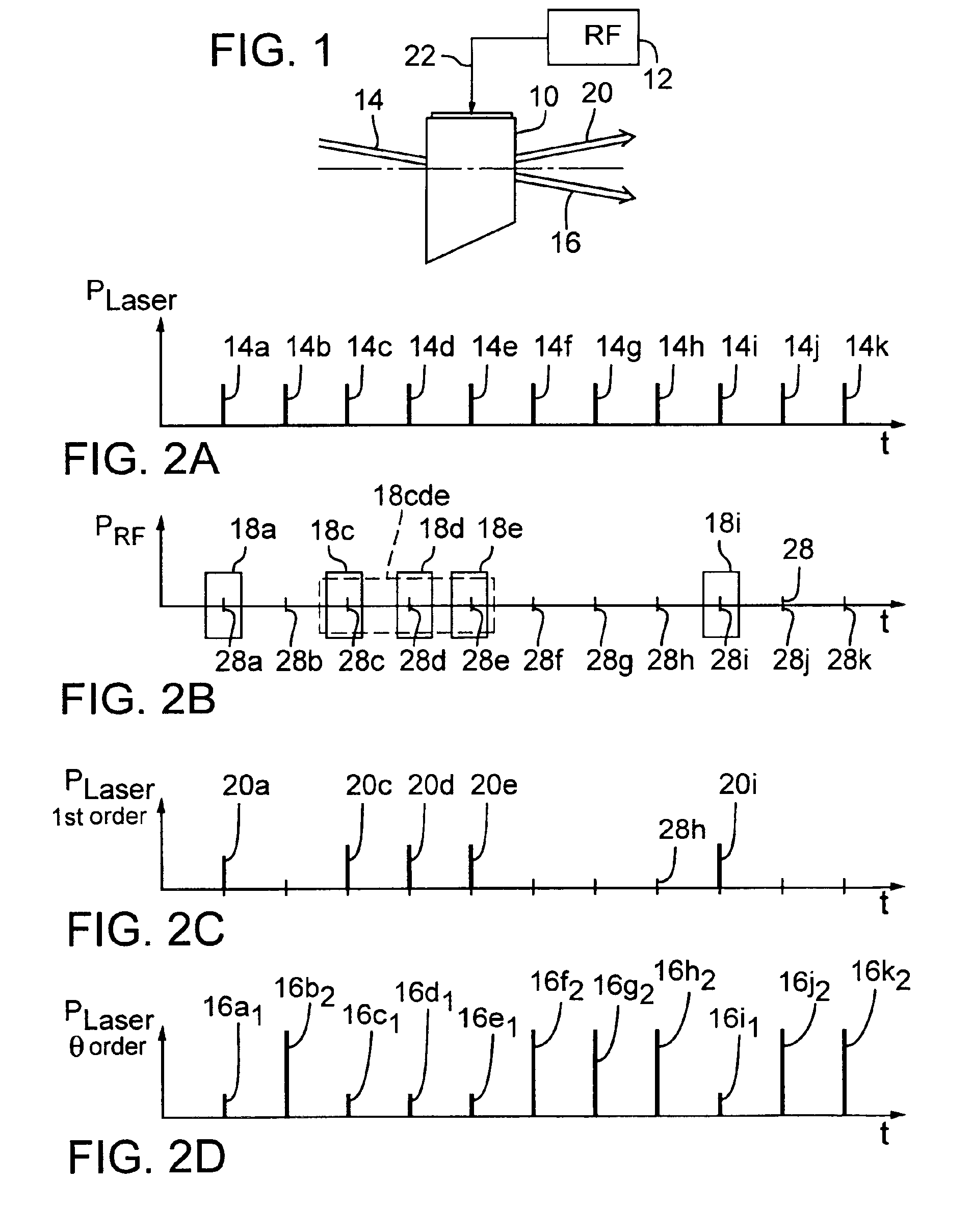Laser pulse picking employing controlled AOM loading
a laser and pulse technology, applied in the field of lasers, can solve the problems of inability to accurately predict the pulse energy level of such lasers, inability to completely sever links, and inability to damage the passivation structure or the silicon substrate, etc., to achieve constant rf power loading, constant thermal loading, and high stability and consistency in pulse energy and pulse energy.
- Summary
- Abstract
- Description
- Claims
- Application Information
AI Technical Summary
Benefits of technology
Problems solved by technology
Method used
Image
Examples
Embodiment Construction
[0032]FIGS. 3A-3C (collectively FIG. 3) show corresponding timing graphs of laser outputs 24a-24k (generically laser outputs 24), RF pulses 38a-38k (generically RF pulses 38) applied to AOM 10, and working laser outputs 40a, 40c, 40d, 40e, and 40i (generically working laser output 40). In particular, FIG. 3A shows laser outputs 24 that are emitted by a laser 126 (FIG. 7) at a constant repetition rate and separated by substantially identical laser output intervals 26. In typical embodiments, the laser output repetition rate may be from about 1 kHz up to about 500 kHz. Exemplary laser output repetition rates are greater than about 25 kHz, greater than about 40 kHz, or greater than about 100 kHz. For link processing embodiments, each working laser output 40 preferably includes a typical single laser pulse with a multiple-nanosecond pulse width. However, skilled persons will recognize that each working laser output 40 may include a burst of one or more laser pulses each having an ultras...
PUM
| Property | Measurement | Unit |
|---|---|---|
| time delay | aaaaa | aaaaa |
| wavelengths | aaaaa | aaaaa |
| energy wavelengths | aaaaa | aaaaa |
Abstract
Description
Claims
Application Information
 Login to View More
Login to View More - R&D
- Intellectual Property
- Life Sciences
- Materials
- Tech Scout
- Unparalleled Data Quality
- Higher Quality Content
- 60% Fewer Hallucinations
Browse by: Latest US Patents, China's latest patents, Technical Efficacy Thesaurus, Application Domain, Technology Topic, Popular Technical Reports.
© 2025 PatSnap. All rights reserved.Legal|Privacy policy|Modern Slavery Act Transparency Statement|Sitemap|About US| Contact US: help@patsnap.com



